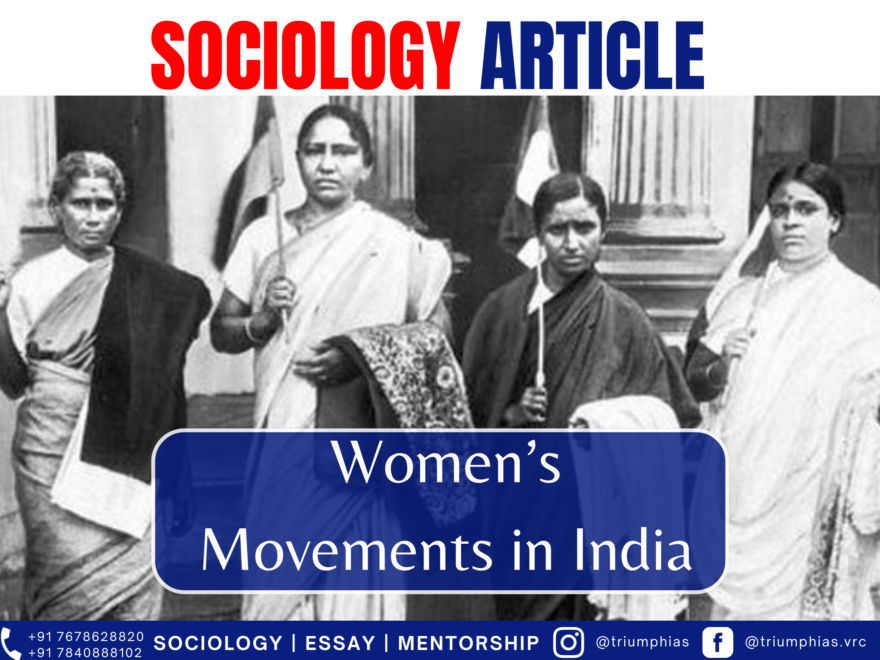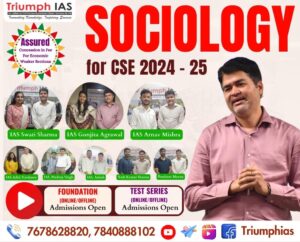Womens Movement in India
Relevant for Sociology Optional for Civil Service Examination.
Paper 2: Unit-13 Social Movements in modern India
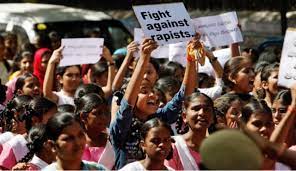
Womens Movement in India.
The history of the Women’s movement in India is hard to pinpoint. Many believe it began in the nineteenth century, but some historians think it started earlier, during the sixteenth and seventeenth centuries with the Bhakti and Sufi movements. The main focus is understanding how men’s authority impacted women’s status. Women faced hardships due to practices like child marriage, polygamy, and restrictions on widow remarriage. These issues persisted until social reformers confronted them in the nineteenth century.
Here are key factors that fueled the women’s movements:
Reform movements before and after India’s independence focused on improving women’s status. Groups like the Brahmo Samaj and Arya Samaj tackled issues such as sati, remarriage, divorce, female education, and dowry.
Justice Ranade opposed practices like child marriages, polygamy, and restrictions on widow remarriage, promoting women’s education instead.
Important figures like Raja Ram Mohan Roy helped abolish the sati system, while others like Ishwar Chandra Vidyasagar advocated for widow remarriage.
Many experts believe the women’s movement in India was part of broader social reforms, with a strong emphasis on women’s issues starting in the nineteenth century.
Western education also played a role in challenging male dominance and traditional gender roles, helping the movement gain momentum.
Educated women played a leadership role, and supportive men also helped in changing old religious customs.
Changing social and religious views, along with less resistance from men towards women’s groups, helped the cause.
National political leaders supported women’s movements and actively participated in their campaigns.
Naming 1975-85 as the International Women’s Decade boosted the movements, helping overcome ideas of women’s inferiority and giving them a stronger identity.
The Central Social Welfare Board (CSWB), set up in 1953, strengthened voluntary actions towards women’s welfare.
The Ministry of Women and Child Welfare funded initiatives such as creating more hostels for working women in cities.
In the early 1900s, Mahatma Gandhi highlighted the poor condition of women. Gandhi encouraged women to fight for both political freedom and their rights, bringing many women into the freedom struggle. He believed in improving women’s status by freeing them from social and legal barriers, focusing on issues like guardianship, inheritance, and marriage.
Women involved in the national movement learned the value of independence and education, broadening women’s roles in society. Researchers have studied women’s contributions to independence on smaller, regional scales. Women also played crucial roles in tribal and peasant movements in various regions, often taking on militant and supportive roles.
Various women’s organizations arose during the freedom struggle, increasing women’s participation in social and political activities. Under British rule, there was a social awakening among Indian women, leading to the creation of groups that promoted modern ideals. These groups, supported by the Congress party, focused on women’s education, combating harmful social practices, and fought for equal rights and representation. These organizations effectively started conversations around gender equality and women’s rights.
After independence, the focus of the women’s movement in India shifted towards removing gender inequalities, pausing the momentum of nationalistic women’s movements until the 1970s. However, women still actively participated in local struggles across the country during this period, engaging in various movements for justice and equality.
Contemporary Women’s Movement
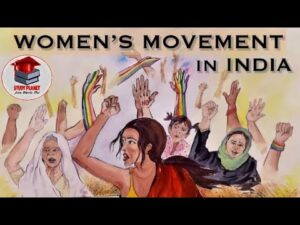
The contemporary women’s movement, beginning in the seventies and eighties, differed from previous ones due to two main influences:
The Women’s Movement in India (WMI) was heavily influenced by global movements, especially from the USA, sparking debates and protests for women’s rights worldwide. This global influence, along with available feminist literature, primarily affected urban, educated women in India. Numerous Indian writings also started focusing on socio-economic and cultural issues concerning women, but this was mainly prevalent in urban areas.
The movement in India mainly grew from the dissatisfaction among grassroots women with the development model that failed to address poverty, discrimination, and injustice towards women. By the 1970s, a sense of disillusionment led women’s groups to adopt a more confrontational approach towards development processes.
Several significant movements helped strengthen the Women’s Movement in India at the grassroots level. For example, the Shahada Movement in Maharashtra focused on helping local communities affected by drought and famine. Young activists in these movements adopted a more aggressive strategy, pushing for essential changes like land rights and minimum wages, with special camps organized for women’s involvement and empowerment.
Women actively participated in mass mobilizations, advocating not only broad societal issues but also specifically focusing on women’s oppression due to gender biases.
The movement led to the initiation of anti-alcohol campaigns because drunken men often abused their wives. Special gatherings of women were organized to address and combat this issue, recognizing alcohol abuse as a significant factor in women’s oppression.
The Shahada movement initially opposed landlords but later also protested against alcohol consumption and domestic violence. It shifted societal norms by making domestic violence a public concern rather than a private family issue, challenging patriarchal norms.
Self Employed Women Association (SEWA)
Led by Ella Bhatt, SEWA, formed in 1972 in Ahmadabad, aimed at organizing women working in informal sectors who faced low wages, poor working conditions, and exploitation.
SEWA aimed to enhance working conditions, provide technical and economic support, promote collective bargaining for better product prices, and improve women’s economic status.
It empowered women economically, ensuring consistent work and access to development opportunities, reducing their vulnerability to exploitation.
Anti-Price-Rise Front
In response to famines leading to inflation and black-marketing in Maharashtra, activists formed a united front to mobilize women against these economic hardships. This mass movement, primarily involving urban housewives, demanded price controls and fair distribution of essential commodities, even directly confronting black-marketers.
Nav Nirman Samiti
Beginning as a student protest, this movement grew significantly when middle-class women joined to oppose rising prices and political chaos. Women’s involvement was driven by the impact of increased costs and the scarcity caused by hoarding and black-marketing, helping to solidify women’s identity as a distinct group advocating for societal betterment.
In Andhra, the Progressive Organization of Women (POW) was established as the first feminist group. They focused on fighting gender-based oppression, advocating for equality between men and women in all life aspects. They pinpointed the main sources of exploitation as the gender-based division of labor and cultural norms justifying such division.
1975 marked significant progress in the feminist movement, celebrated as the International Women’s Year by the United Nations. Inspired by POW, women in Pune and Bombay formed new feminist organizations, emphasizing women’s rights and equality.
Various groups, including a faction of the CPI and socialist organizations, emphasized women’s issues, discussing matters like exploitation of devdasis and the condition of Muslim women. Extensive debates and campaigns against dowry, bride-burning, and sexual harassment were conducted across India.
The emergency in 1975 temporarily stalled the Women’s Movement in India (WMI), but it rebounded in 1977, primarily led by urban groups, following the rise of the Janata Party.
By the 1980s, active women’s groups across India were organizing various activities, such as exhibitions and meetings, to discuss and campaign against women-related issues, including legal injustices in rape cases.
WMI emphasized women’s autonomy over their bodies, addressing topics like health, violence, legal rights in marriage, and childcare.
The focus of WMI also included the enactment and amendment of women-favorable legislation, as well as the effective enforcement of laws related to women and their rights.
WMI now prioritizes not only women’s education but also ensures the relevance and quality of educational content, promoting the establishment of women and development centers, and introduction of women-focused academic courses.
WMI’s current goal is genuine equality, advocating for women’s substantial participation in all societal sectors, reflecting its evolving objectives from protesting against women’s negative portrayal to promoting women’s self-determination rights.
Forms of women’s participation in movements:
Advocacy for socio-economic and political rights of vulnerable groups such as tribals and workers.
Campaigns for improved working conditions and equal pay for women.
Participation in broader social advocacy, addressing issues like abortion and sexual exploitation affecting society at large.
Indian women’s movements pursued two main objectives:
- The first was the liberation or upliftment of women, which involved reforming societal practices to allow women to take on more significant and constructive roles in society.
- The second objective was ensuring equal rights for both men and women, meaning that women should also have the same civil rights as men in political, economic, and familial spheres.
Jana Everett refers to the first as ‘corporate feminism’ and the second as ‘liberal feminism.’ Women’s groups worked towards these goals by organizing public meetings, communicating views to government officials, forming committees to investigate conditions, and holding conferences to mobilize women.
During the progression of autonomous women’s movements in India, there was substantial debate about the concept of feminism. Feminism, complex and diverse, is composed of political ideologies used by women’s movements to promote women’s equality. A significant discussion emerged questioning the relevance of Western feminism concepts to Indian realities. Some activists argued that the form of male dominance in India is unique compared to Western societies, leading to different forms of demands and resistance from women.
Madhu Kishwar, an activist, emphasizes the importance of considering our cultural traditions when discussing feminism. She suggests leveraging the positive aspects of our traditions for transformation and combating anti-women ideas. This way, feminism in India is not just a topic for theoretical discussion but a tool for social change. In conclusion, women’s movements in India have been pivotal in bringing women’s issues to the forefront of the national agenda.
Reference: Static Portion
Related Blogs…
 |
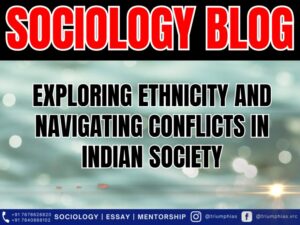 |
Frequently Asked Questions:
1. Question: Define the term “ethnic movement” and provide an example from India.
Answer: An ethnic movement refers to a collective effort by a group sharing common cultural, linguistic, or religious traits, seeking to assert their identity and rights; an example from India is the Khalistan Movement in Punjab.
2. Question: Identify the main objectives behind the Gorkhaland ethnic movement.
Answer: The Gorkhaland ethnic movement primarily seeks to establish a separate state for India’s Nepali-speaking population in the Darjeeling region, advocating for linguistic and cultural recognition and political autonomy.
3. Question: What was the Operation Blue Star, and which ethnic movement was it related to?
Answer: Operation Blue Star was a military action in 1984, aiming to remove Sikh militants hiding in the Golden Temple in Amritsar; it is related to the Khalistan movement, which sought a separate Sikh country.
4. Question: Mention a critical factor that triggered the emergence of ethnic movements in India, as discussed by Dipankar Gupta.
Answer: Dipankar Gupta emphasized that ethnicity is fundamentally a political process, wherein caste and religion, the key components of identity formation, are politicized by leaders for vested interests.
5. Question: What were the primary reasons for the Assam Ethnicity conflicts involving Bodo tribals and Bengali Muslim settlers?
Answer: The Assam Ethnicity conflicts primarily stemmed from issues related to immigration, land rights, and resource allocation, leading to clashes, riots, and evolving relationships among indigenous communities to address challenges.
6. Question: Briefly describe the role of the Dravidian Movement in terms of caste and societal structure.
Answer: The Dravidian Movement, led notably by E.V. Ramasamy, aimed to establish an egalitarian society, focusing on anti-Brahmanism and advocating for equal rights for backward castes, while also introducing reforms like self-respect marriages.
7. Question: Name the prominent ethnic movements in North-East India and specify one common objective.
Answer: Prominent ethnic movements in North-East India include the Nagas’ and Mizos’ struggles; a common objective was to gain autonomy and recognition for their distinct tribal identities and cultural uniqueness.
8. Question: What is the key argument of Gail Omveldt regarding traditional Indian society and multiculturalism?
Answer: Gail Omveldt opposed romanticizing traditional Indian society, arguing that hierarchy has always dominated it and dismissing the notion that multiculturalism is an intrinsic feature of Indian society as a myth.
9. Question: Briefly explain the social hierarchy factor as a contributing element to ethnic movements as suggested by Olzak.
Answer: Olzak suggests that the construction of hierarchies among ethnic communities, which often leads to the suppression of one group by another, is a key factor that can instigate social and ethnic movements.
10. Question: Identify one consequence of the unequal economic development factor within the context of ethnic movements in India.
Answer: One consequence of unequal economic development is the marginalization and underdevelopment of certain groups, leading to feelings of alienation and sometimes initiating ethnic movements as these groups strive for equality and recognition.
GS Related Practices Questions…
To master these intricacies and fare well in the Sociology Optional Syllabus, aspiring sociologists might benefit from guidance by the Best Sociology Optional Teacher and participation in the Best Sociology Optional Coaching. These avenues provide comprehensive assistance, ensuring a solid understanding of sociology’s diverse methodologies and techniques.
META TAGS:
Ethnic Movements, ethnic movements in india, ethnic movement in sociology, Punjab Movement, North-East Ethnic Movements, Gorkhaland Movement, Dravidian Movement, Assam Ethnicity, Ethnic Conflicts, Sociopolitical Impact, India, Ethnic Consciousness, Ethnic Rights, Political Crisis, Economic Development, Cultural Disparities, Khalistan Movement, Nagaland, Mizoram, Multiculturalism, Political Economy, Identity Formation, Social Hierarchies, Bodo Tribals, Bengali Muslim Settlers, Anti-Sikh Riots, Operation Blue Star, Unequal Development, Ethnic Violence, Political Mobilization

Why Vikash Ranjan’s Classes for Sociology?
Proper guidance and assistance are required to learn the skill of interlinking current happenings with the conventional topics. VIKASH RANJAN SIR at TRIUMPH IAS guides students according to the Recent Trends of UPSC, making him the Best Sociology Teacher for Sociology Optional UPSC.
At Triumph IAS, the Best Sociology Optional Coaching platform, we not only provide the best study material and applied classes for Sociology for IAS but also conduct regular assignments and class tests to assess candidates’ writing skills and understanding of the subject.
Choose The Best Sociology Optional Teacher for IAS Preparation?
At the beginning of the journey for Civil Services Examination preparation, many students face a pivotal decision – selecting their optional subject. Questions such as “which optional subject is the best?” and “which optional subject is the most scoring?” frequently come to mind. Choosing the right optional subject, like choosing the best sociology optional teacher, is a subjective yet vital step that requires a thoughtful decision based on facts. A misstep in this crucial decision can indeed prove disastrous.
Ever since the exam pattern was revamped in 2013, the UPSC has eliminated the need for a second optional subject. Now, candidates have to choose only one optional subject for the UPSC Mains, which has two papers of 250 marks each. One of the compelling choices for many has been the sociology optional. However, it’s strongly advised to decide on your optional subject for mains well ahead of time to get sufficient time to complete the syllabus. After all, most students score similarly in General Studies Papers; it’s the score in the optional subject & essay that contributes significantly to the final selection.
“A sound strategy does not rely solely on the popular
Opinion of toppers or famous YouTubers cum teachers.”
It requires understanding one’s ability, interest, and the relevance of the subject, not just for the exam but also for life in general. Hence, when selecting the best sociology teacher, one must consider the usefulness of sociology optional coaching in General Studies, Essay, and Personality Test.
The choice of the optional subject should be based on objective criteria, such as the nature, scope, and size of the syllabus, uniformity and stability in the question pattern, relevance of the syllabic content in daily life in society, and the availability of study material and guidance. For example, choosing the best sociology optional coaching can ensure access to top-quality study materials and experienced teachers. Always remember, the approach of the UPSC optional subject differs from your academic studies of subjects. Therefore, before settling for sociology optional, you need to analyze the syllabus, previous years’ pattern, subject requirements (be it ideal, visionary, numerical, conceptual theoretical), and your comfort level with the subject.
This decision marks a critical point in your UPSC – CSE journey, potentially determining your success in a career in IAS/Civil Services. Therefore, it’s crucial to choose wisely, whether it’s the optional subject or the best sociology optional teacher. Always base your decision on accurate facts, and never let your emotional biases guide your choices. After all, the search for the best sociology optional coaching is about finding the perfect fit for your unique academic needs and aspirations.
To master these intricacies and fare well in the Sociology Optional Syllabus, aspiring sociologists might benefit from guidance by the Best Sociology Optional Teacher and participation in the Best Sociology Optional Coaching. These avenues provide comprehensive assistance, ensuring a solid understanding of sociology’s diverse methodologies and techniques. Sociology, Social theory, Best Sociology Optional Teacher, Best Sociology Optional Coaching, Sociology Optional Syllabus.
Best Sociology Optional Teacher, Sociology Syllabus, Sociology Optional, Sociology Optional Coaching, Best Sociology Optional Coaching, Best Sociology Teacher, Sociology Course, Sociology Teacher, Sociology Foundation, Sociology Foundation Course, Sociology Optional UPSC, Sociology for IAS,
Follow us :
🔎 https://www.instagram.com/triumphias
🔎https://www.youtube.com/c/TriumphIAS
🔎https://t.me/VikashRanjanSociology
Find More Blogs…
| Compare and contrast Karl Marx’s and Max weber’s | Karl Marx- Historical Materialism |
| Talcott Parsons : Social system | Scope of the subject and comparison with other social sciences |
KEYWORD: Womens Movement in India, Womens Movement in India, Womens Movement in India, Womens Movement in India, Womens Movement in India, Womens Movement in India, Womens Movement in India, Womens Movement in India, Womens Movement in India, Womens in India

